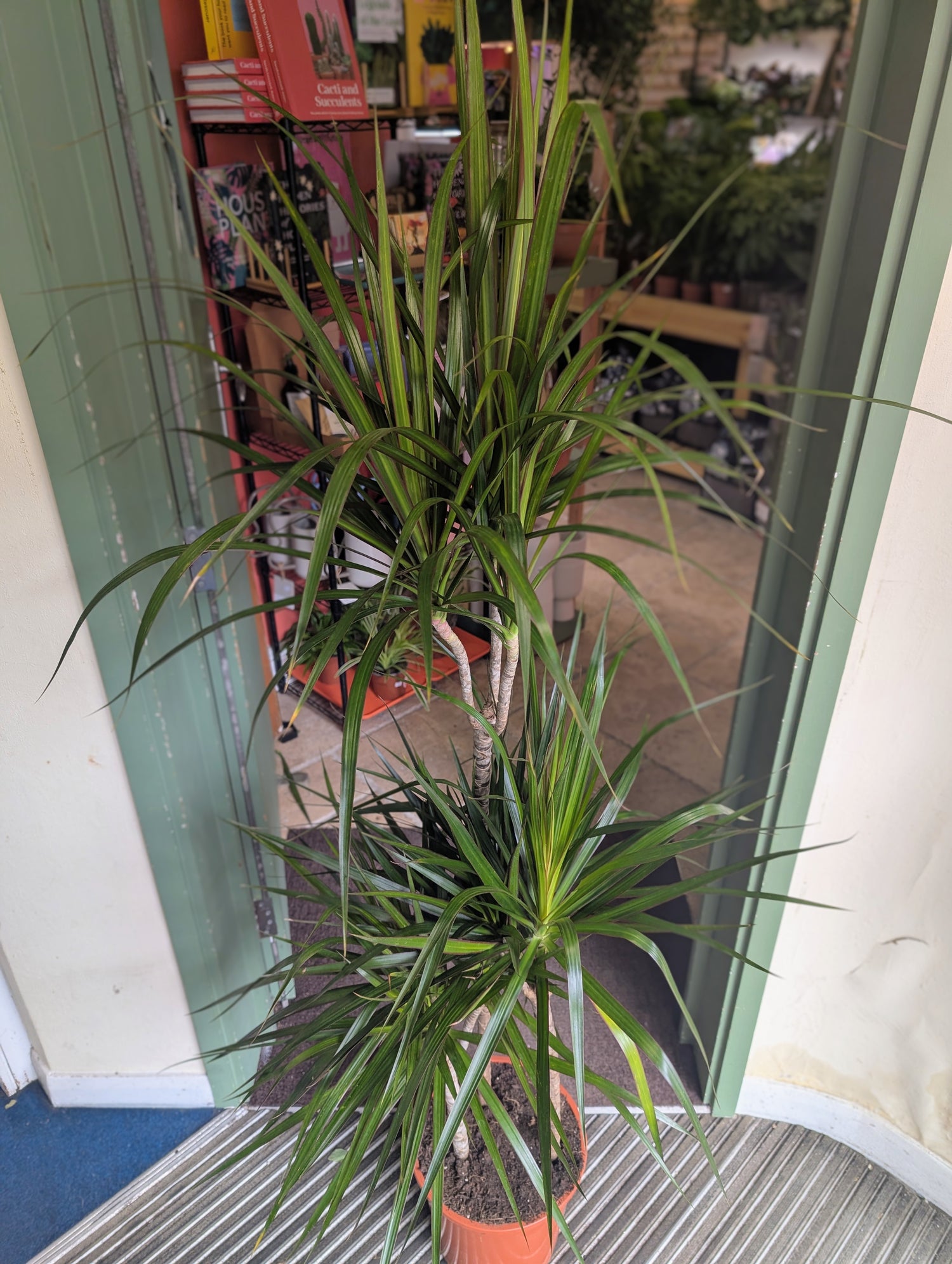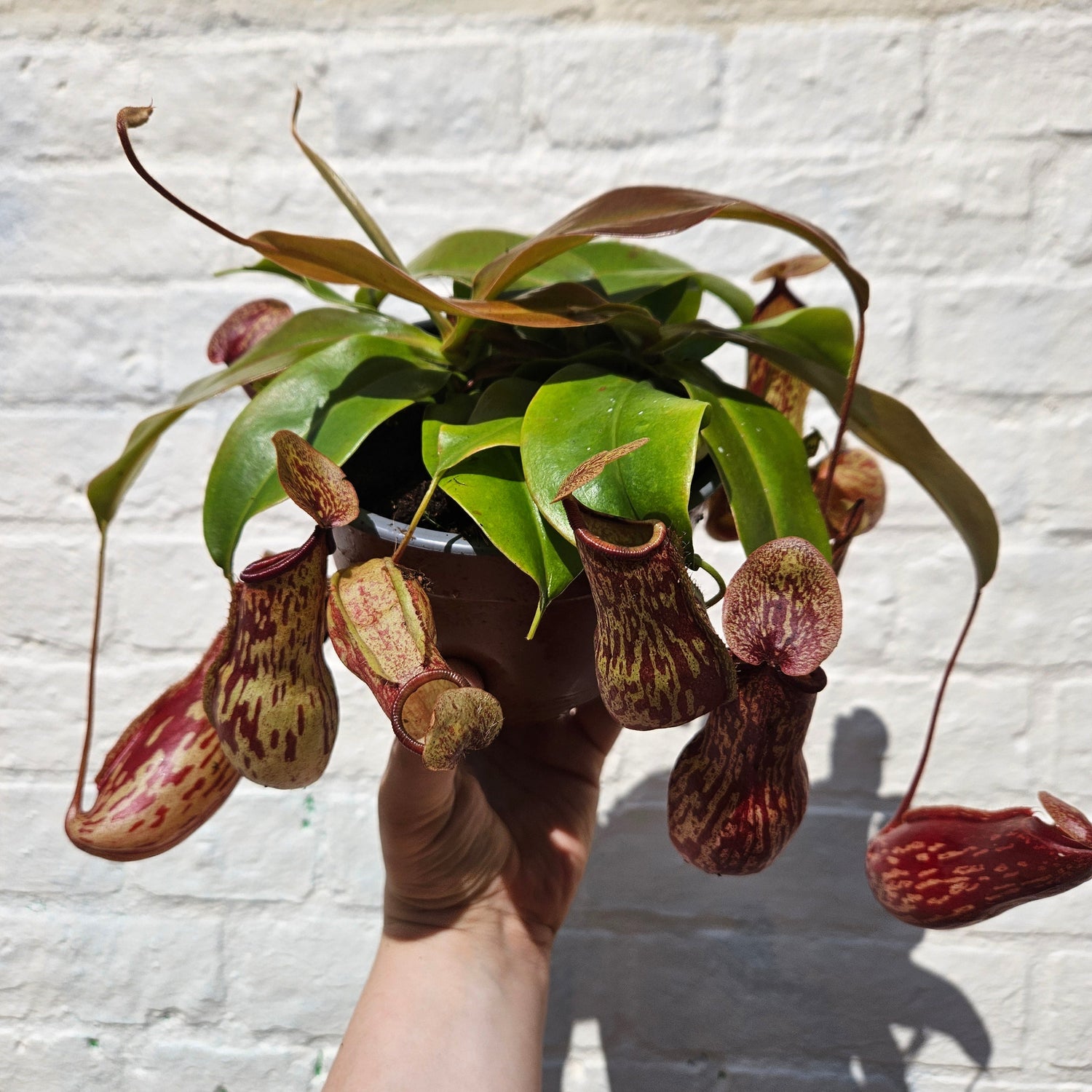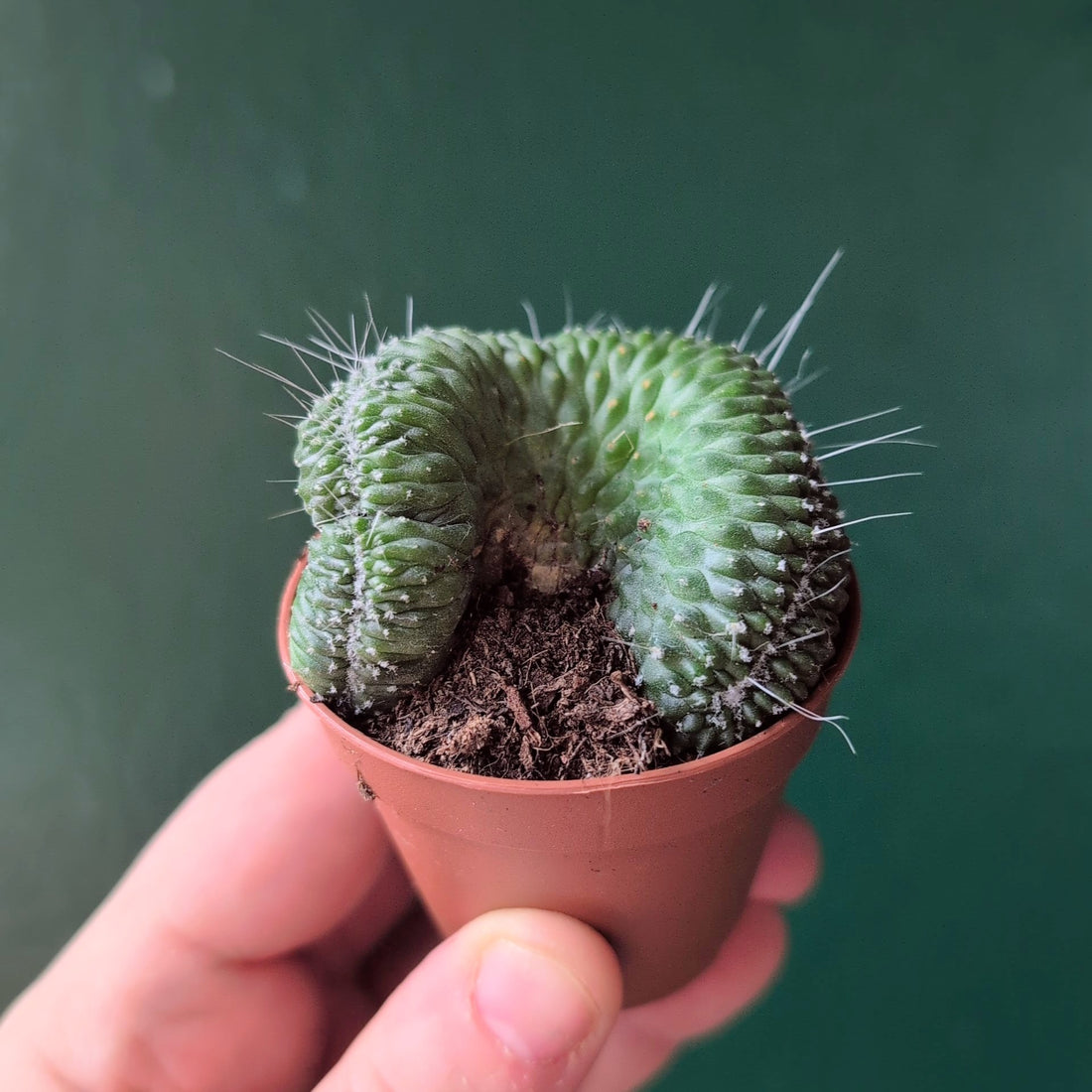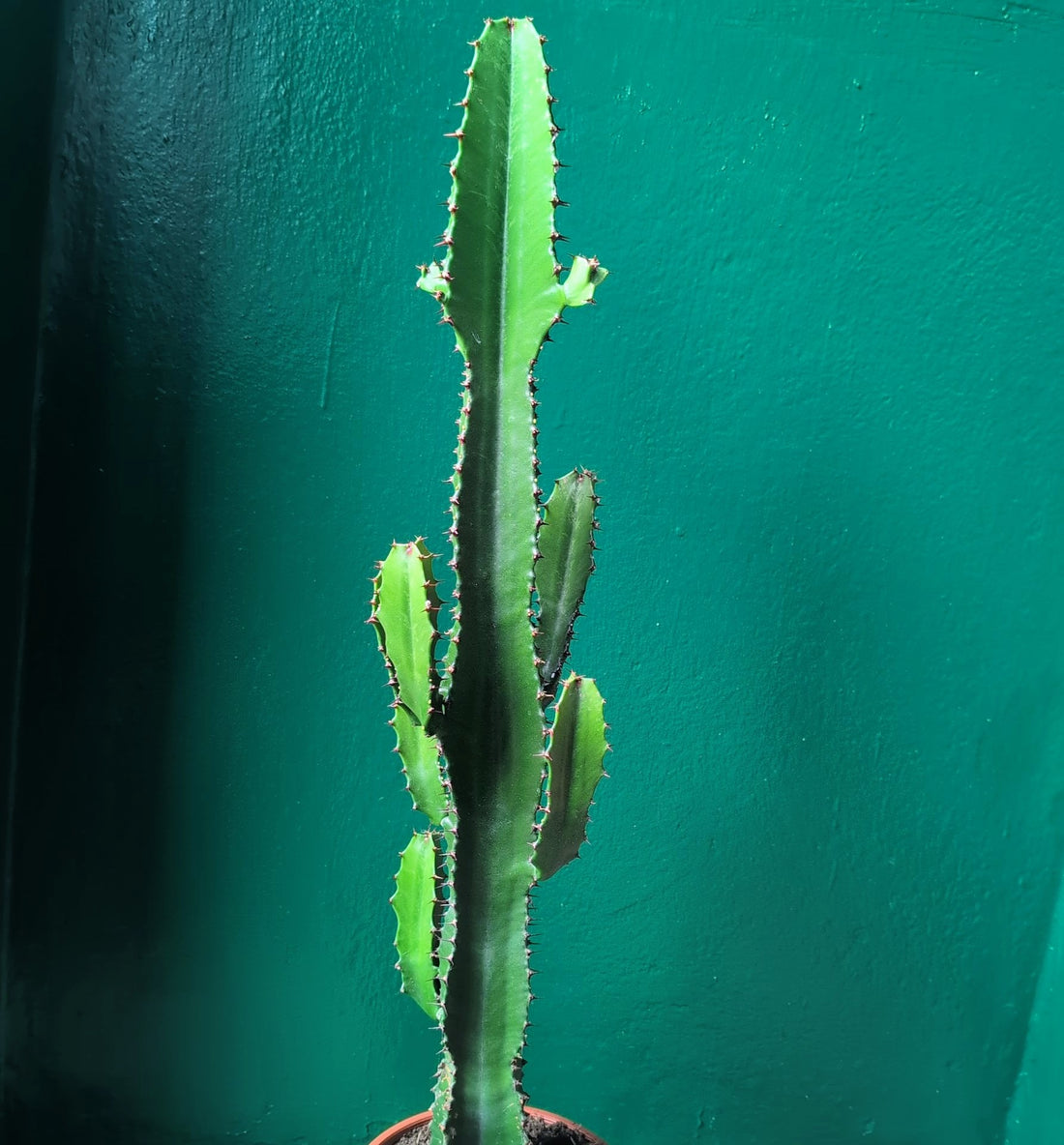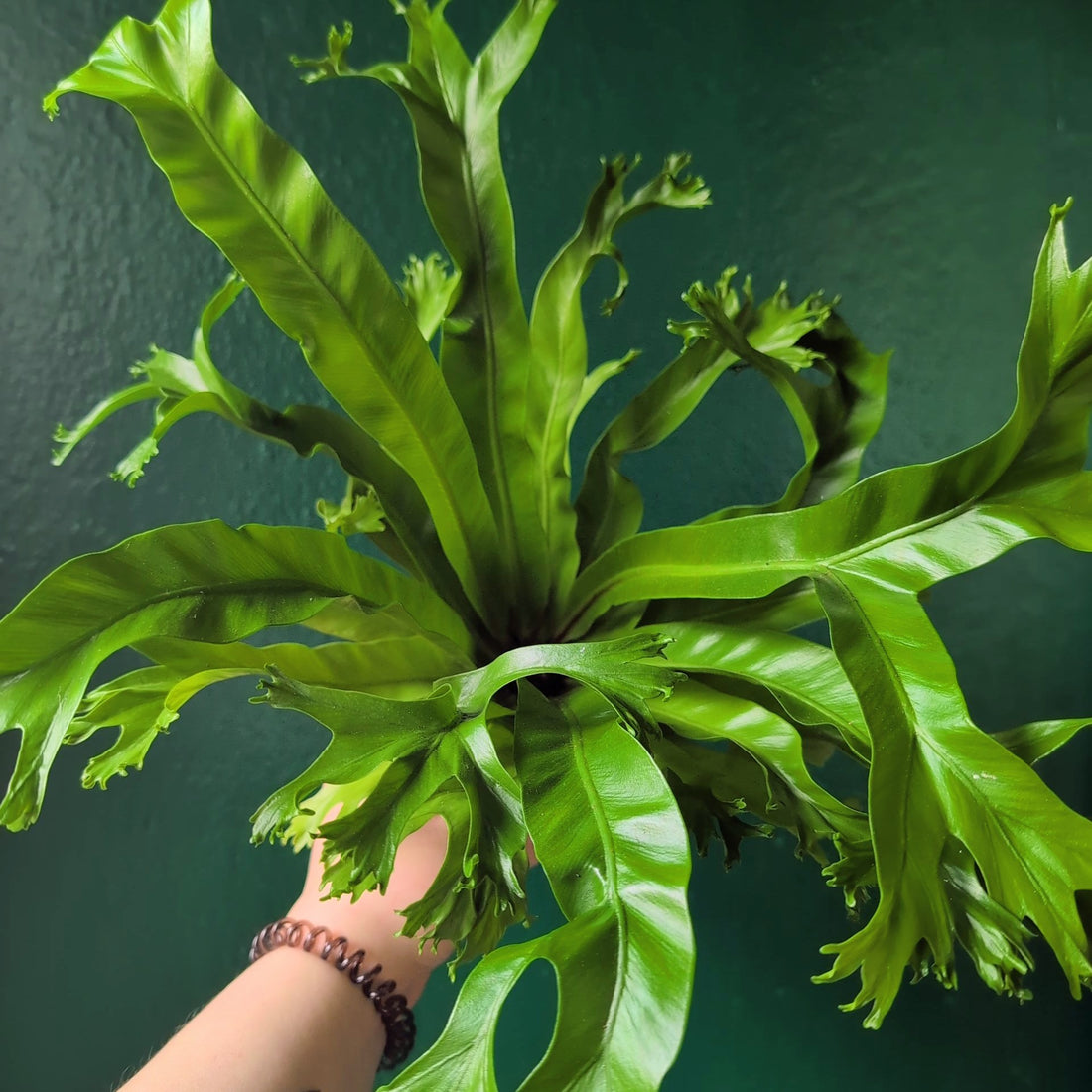The Dracaena marginata is perfect for adding height to your plant collection, with its sturdy stem supporting a slim, upright growth habit. Its narrow, sword-shaped leaves are deep green with striking red edges, giving it a bold and elegant look.
Dracaena is a diverse genus of over 120 species of trees and shrubs. The largest, Dracaena draco—known as the Dragon Tree—can reach around 25 feet tall. The name Dracaena comes from the Greek word Drakaina, meaning “female dragon,” a reference to the variety’s green foliage and the red resin, or “dragon’s blood,” produced by D. draco.
The Dragon Tree is the botanical symbol of Tenerife, where one of the world’s oldest and largest specimens still stands. This legendary tree is estimated to be between 250 and 350 years old.
Dragon Tree Overview
The Dracaena marginata, commonly known as the Dragon Tree, is admired for its low-maintenance care and striking appearance. Native to Madagascar, it features slender, dark green leaves edged in deep red, giving it both elegance and resilience as a houseplant.
Throughout history, Dracaenas have carried symbolic meanings. In Roman mythology, they were linked to the legend of a dragon with one hundred heads, while in Chinese culture they are regarded as symbols of good luck and prosperity.
As a houseplant, the Dragon Tree adapts well to a range of indoor environments. It thrives in humid rooms such as bathrooms or kitchens but can also grow successfully in other areas of the home, provided it is kept out of direct sunlight.
How to Look After a Dracaena Marginata (Dragon Tree)
Light:
Dragon Trees prefer bright, indirect light for healthy growth. Direct sunlight should be avoided, as it can scorch the leaves. While they can adapt to lower-light conditions, this will usually result in slower growth and less vibrant foliage.
Temperature and Humidity:
Dragon Trees grow best in temperatures between 12–32°C and prefer moderate humidity. Regular misting or placing the plant near a humidifier can help create ideal conditions, especially in dry indoor environments. Avoid positioning the plant near cold drafts or heat sources, as sudden temperature changes can cause stress.
Leaf Care:
To keep the foliage looking its best, give the plant an occasional shower or gently wipe the leaves to remove dust and allow for better photosynthesis.
Watering:
Water your Dragon Tree when about half of the soil feels dry. It’s safer to underwater than to overwater, as excessive moisture can cause root rot. Use a well-draining potting mix to help prevent waterlogging. Watering needs will vary depending on light levels: plants in brighter locations require more frequent watering, while those in shadier spots need less. During the winter months, reduce watering to accommodate slower growth.
Fertilising:
During the growing season (spring and summer), feed your Dragon Tree with a balanced liquid fertiliser approximately once every four waterings. Always follow the instructions provided on your fertiliser packaging. Feeding should be reduced or paused during the dormant winter months, when the plant’s growth naturally slows.
How to Re-pot a Dragon Tree
Repot your Dragon Tree when it becomes root-bound or outgrows its current container, usually every 2–3 years. Select a pot one size larger than the current one and fill it with fresh, well-draining soil.
Before repotting, water your plant 24 hours in advance to help reduce stress. Gently transfer the plant, taking care not to damage the roots. After repotting, avoid fertilising for a few weeks to allow the plant to acclimate to its new home.
How to Propagate a Dragon Tree
Propagating a Dragon tree is an exciting way to grow new plants. Follow these steps:
- Choose a Healthy Stem: Select a stem near the top with new growth with a woody stem.
- Cut the Stem: Use a clean, sharp knife or scissors to cut. Ensure your cutting is at least 6 inches (15 cm) long. Remove bottom leaves.
- Rooting: Place the cutting in lukewarm water or moist soil. Roots should develop within a few weeks. If using water, make sure to change the water every week. Place in a bright indirect spot.
- Transplant: Once your cutting has well-established roots, transplant it into a pot with the appropriate soil mix.
How to Prune a Dragon Tree
Pruning your Dragon tree helps maintain its shape and encourages healthy growth. Remove any yellow or brown leaves.
How to Take a Cutting from a Dragon Tree
Taking cuttings for propagation follows a similar process as mentioned earlier. Ensure you choose a healthy stem, make a clean cut, and follow the propagation steps.
How Often Should I Water a Dragon Tree?
Watering frequency depends on various factors like humidity, temperature, and pot size and location. As a general rule, check the top half of soil and water when it's dry. Water less in winter and more frequently during the growing season.
Why Are My Dragon Tree Leaves Going Yellow/Brown/Curling?
-
Yellow Leaves: Yellowing can result from overwatering, poor drainage, or too much direct sunlight. Adjust watering and light exposure accordingly. If yellowing occurs alongside wilting, it is often a sign of overwatering—check for root rot and repot if necessary.
-
Brown Leaves: Brown edges or spots may indicate low humidity, underwatering, excessive direct sunlight, or proximity to heat sources such as radiators. Increase humidity, adjust watering, and ensure the plant isn’t exposed to extreme temperatures.
-
Curling Leaves: Curling can be caused by underwatering, over-fertilization, or low humidity. Review your watering schedule, check fertilization levels, and maintain adequate humidity to help the leaves recover.
How to Make a Dragon Tree Bushy?
To promote a bushier appearance, prune any leggy stems. Adequate light is essential, as insufficient light can cause the plant to grow tall and sparse. Regular pruning, combined with proper light exposure, will help your Dragon Tree maintain a fuller, more attractive shape.
Are Dragon Trees Poisonous to Cats and Dogs?
The Dragon Tree (Dracaena marginata) is toxic to cats and dogs. If ingested, it can cause vomiting, nausea, and loss of appetite. Seek veterinary assistance if a pet consumes a significant amount. To keep your pets safe, place your Dragon Tree out of reach or consider choosing pet-friendly houseplants for your home.
With these expert tips, you're well-equipped to care for your Dracaena and enjoy its lush, tropical beauty in your home. Happy Dragon tree growing!

